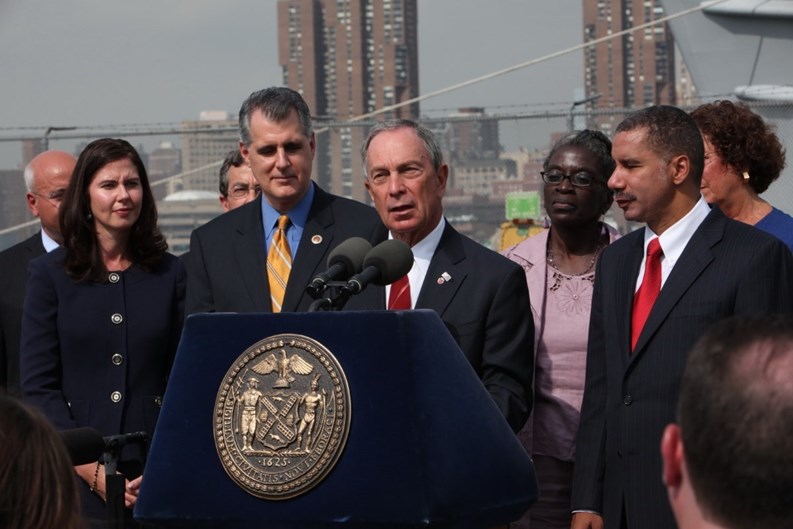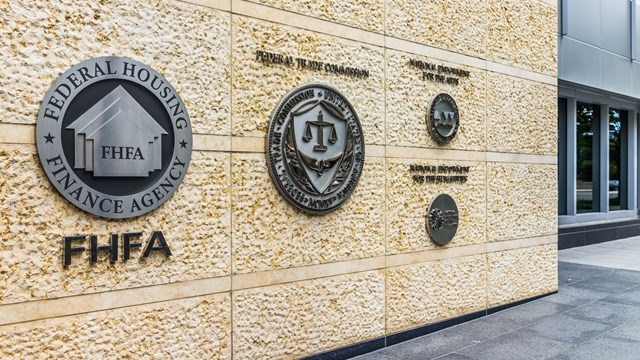In early 2009, at the urging of President Barack Obama, Congress passed the American Recovery and Reinvestment Act (ARRA) with a view toward easing the blow dealt to the economy by what some are calling the Great Recession. The ARRA had a tall order to fill: create new jobs while saving existing ones, cultivate economic activity in both the short- and long-term—and in the words of the official Recovery.gov website, do it all with “unprecedented levels of accountability and transparency in government spending.”
The act sought to accomplish this short-but-mighty list by providing some $787 billion in funding for everything from tax cuts to federal contracts, grants, and loans. New York State received $250 million dollars from the Fed (via the U.S. Department of Housing and Urban Development (HUD)'s Tax Credit Assistance Program [TCAP]), and of that, New York City’s Department of Housing Preservation and Development (HPD) received a chunk of $85 million to be put toward creating low income housing and the creation and preservation of jobs.
Since TCAP funds not spent by February 2012 will be recaptured by HUD, New York City officials had to act fast to make use of the money. And act they did; so far, almost 20 stimulus-funded affordable housing projects are already underway in New York City. These projects include both new construction and the rehabilitation of existing buildings.
“New York City is the first city in the nation to put stimulus for housing projects to use, and that means real jobs and affordable housing for New Yorkers,” said Mayor Michael R. Bloomberg in a statement after the allotment was announced. “Thanks to New York City’s congressional delegation, the city received tens of millions of dollars to revive stalled affordable housing projects, and we’re putting it to use to provide affordable housing for more than 700 families.” Bloomberg went on to say that the stimulus money and associated construction would create more than 2,800 jobs for construction workers, architects, engineers, electricians, plumbers, and others in the residential housing industry—a field that has been hit especially hard by the recession.
The infusion of stimulus money wasn't a moment too soon, according to New York State Division of Housing and Community Renewal (DHCR) Commissioner Deborah VanAmerongen, who says the economic crisis has made it difficult for the Low-Income Housing Tax Credit Program to reach its potential. “Governor [David] Paterson was the first governor in the nation to propose that funding [for] affordable housing development and preservation be included in the economic recovery package,” she said. “TCAP will get stalled projects up and running and create quality affordable housing and stronger neighborhoods throughout New York City and the entire state,” VanAmerongen said.
“New York is a leader in addressing the affordable housing crisis and rescuing construction and rehabilitation projects jeopardized by the economy,” Paterson said in a statement applauding the funding. “Thanks to the efforts of the entire New York congressional delegation, we successfully fought to make affordable housing a priority in the stimulus package, and we're the first state in the nation to commit Economic Recovery funds to stalled developments.”
Building Up in Harlem
Of course, TCAP funds haven't been simply put in suitcases and given out in the state house parking lot. Disbursement has been done in stages, with the first happening over this past summer. HPD spent roughly $60 million in the first round of TCAP funding to help finance four development projects that are now underway, and in November, city officials announced that another $28.7 million is being made available in a second round of TCAP disbursements which will be distributed to ten development projects.
So what are these projects, exactly? One area that has benefited directly from TCAP is Harlem, where construction is already underway on the Balton and Douglass Park projects, which will provide a combined 226 affordable housing units.
Both the Balton and Douglass Park are being developed by The Richman Group Development Corporation and were designed by SLCE Architects of Manhattan. Current plans call for this once-vacant piece of land in HPD’s property portfolio is expected to be transformed into a mixed-income residential community, affordable to families with incomes ranging from $30,750 to $99,840 for a family of four. The two new buildings will include approximately 15,000 square feet of ground floor retail space and 119 underground parking spaces. A third building, with 15 additional units and a 1,000-square-foot community facility space set aside for local non-profit Harlem Mothers SAVE, is expected to start construction in 2010.
The Balton will be located at the northeast corner of St. Nicholas Avenue and West 127th Street. The new apartment building will be across the street from St. Nicholas Park and the entrance to the 125th Street subway station. It consists of two wings of six and 12 stories respectively, and will include a mix of 156 studio, one-, two-, and three-bedroom apartments. The project is a 75/25 mixed-income rental, which means that 75 percent of the units will be reserved for households earning up to 130 percent of the Area Median Income (AMI) for New York City, which in this case is equal to $99,840 for a family of four. The other 25 percent of the units will be reserved for households earning up to 60 percent of AMI—equal to $46,100 for a family of four in this area. Building amenities will include concierge service, a fitness facility, a resident lounge and kids' activity room, an outdoor courtyard and roof terrace, and storage space for bikes.
Douglass Park will be located at the southwest corner of Frederick Douglass Boulevard and West 128th Street. Apartments in the 70-unit, eight-story building will be reserved for households earning from 40 percent AMI, which is equal to $30,750 for a family of four, up to 60 percent of AMI. Like The Balton, the building will also include a resident lounge, fitness center, outdoor courtyard, bike storage, and laundry facilities.
HPD Commissioner Rafael Cestero feels that the two new buildings will be a boon to the entire neighborhood. “The vacant lots and abandoned buildings that once plagued and characterized Harlem are a thing of the past,” he said. “Through the efforts of HPD and our partners, we are restoring vitality block-by-block, bringing quality affordable housing, new economic opportunity and stability back to this proud neighborhood. The Balton and Douglass, which represent 226 new affordable units and more than 1,050 construction-related jobs, are emblematic of the revitalization that so many have worked to bring here to Harlem.”
Excavation and foundation work began on the sites in mid-September, and both buildings are projected for completion in the summer of 2011. Construction of the two projects is expected to create a total of more than 1,050 building-related jobs. Apartments in both buildings will be marketed through city-supervised lotteries, with applications made available in late 2010. For more information on obtaining an application please visit www.thebalton.com and www.douglass parknyc.com
In Manhattan and Brooklyn
New stimulus-funded projects are also underway on the east side of Manhattan, including the Hobbs Court and Ciena buildings.
On an East 102nd Street site, 12 deteriorated walk-up buildings will be demolished and replaced by a nine-story building to be known as Hobbs Court. The new building will offer 259 residential apartments, community facility space and underground parking. On an East 100th Street site, five vacant six-story buildings will be substantially rehabilitated and combined into a single building to be known as The Ciena. The building will contain 81 new residential apartments, elevators and landscaped open space for the residents.
The two buildings, developed through a $143.5 million joint venture between Phipps Houses and Urban Builders Collaborative, are slated for completion in the fall of 2011. All the units in both developments will be permanently affordable to households with annual incomes up to $46,080 for a family of four, and up to $32,280 for a single person. The New York City Housing Development Corporation (HDC) is contributing $21.7 million and a loan of $71.4 million for the construction of the project. In addition to that, J.P. Morgan Chase is investing $38.8 million in low income housing tax credit equity to pay down the construction loan at permanent conversion, and Phipps Houses will invest $1.9 million of its own funds as equity and advance $700,000 provided by the New York State Energy Research and Development Authority (NYSERDA) to make energy-saving enhancements to the buildings.
All qualified former residents will be given the opportunity to return to the overhauled building at its completion.
Manhattan isn't the only borough benefiting from TCAP funding; Brooklyn is getting in on the opportunity as well, with the Livonia Terrace rehab project underway on Alabama and Georgia Avenues in East New York. Already under construction, the project will rehabilitate 17 existing apartment buildings comprising 173 units of affordable housing for families. Unlike some of the other, more ambitious projects going on, the Livonia Terrace work will consist largely of repairs and smaller-scale improvements, so current tenants will be allowed to remain in the building during rehabilitation activities.
Round Two
The $28.7 million second round of TCAP funding announced in November will be distributed across 10 different development projects, comprising 604 residential units created to be affordable for families earning 60 percent or less of their neighborhood's AMI. Six of these projects will create nearly 400 brand-new units for people with special needs, while the remaining four HPD projects will rehabilitate just over 200 existing family units.
“This TCAP funding is exactly the kind of critical resource the industry needs to help keep projects moving, get ground broken, and put hardworking people into quality affordable housing,” said Cestero. “These new projects will add an additional 600 units of affordable housing and will further strengthen and stabilize the neighborhoods we serve.”
As the recession grinds on, industry watchers and developers themselves are seeking to find at least some hint of a silver lining amidst the cloudy economic turmoil—and it may be that TCAP-funded developments represent something of a bright spot in an uncertain time. For a complete list of New York State TCAP funded projects, visit the DHCR website at: www.dhcr.state.ny.us/pdf.
To see how stimulus money is being spent in New York City, visit: www.nyc.gov/html/ops/nycstim/html/home/home.shtml.
Liz Robbins is a freelance writer and current law student living in New York City.







3 Comments
Leave a Comment